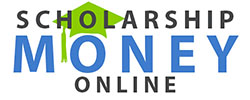The Case for Optional College Admission Testing
The ACT and SAT grind – doing test prep, registering for tests, and waiting with bated breath for the big score reveal – is simply too much for some students. Thankfully, there are both public and private colleges that are test-optional. And soon there may be more.
Voice of America reports that a recent National Association for College Admission Counseling (NACAC) report reviewed 950,000 student records at test-optional schools. It turns out that students that didn’t report test scores slightly outperformed those that did, and that both groups graduated at the same rate.
The report’s author opined that standardized admission testing disadvantages students that don’t do well in a timed testing environment, who are often nonwhite students, poor students, and non-native English speakers. However, this environment doesn’t mirror the college environment and so isn’t a good predictor of college success.
Student Loan Protection Department Undermined
The Washington Post reports that the student loan division of the federal Consumer Financial Protection Bureau is being subsumed into the office of financial education. Outsiders interpret this as an effort to dismantle the agency’s emphasis on holding predatory student loan lenders and servicers accountable. The CFPB’s student office was, for example, responsible for holding for-profit Corinthian College to task for getting a kickback from high-interest private student loans. All told, the office delivered more than $750 million to student loan borrowers who were victims of predatory lending practices. This reorganization of the CFPB is yet another argument for avoiding students loans and finding alternatives – like institutional and external scholarships – to pay for college.
529 Plan Strategies
Families who save for college often do so using a 529 plan as a savings vehicle. 529 plans have similar tax advantages to IRAs, and can be opened by anyone. A recent Kiplinger article outlines the possible drawbacks for students who receive need-based aid. The Free Application for Federal Student Aid (FAFSA) calculates the Expected Family Contribution (EFC) using 5.6 percent of the parents’ (or custodial parent’s) assets and about 25 percent of the student’s assets. When a 529 plan is in a parent’s name, withdrawals aren’t reported as income on the FAFSA. But when the student receives 529 money from an account in another person’s name – like a grandparent’s – that money must be reported as student income on the FAFSA. It’s worth talking to a financial advisor about financial aid implications before setting up a 529 plan.
Want more college news? Subscribe to the Scholarship Money Online newsletter.





Leave A Comment